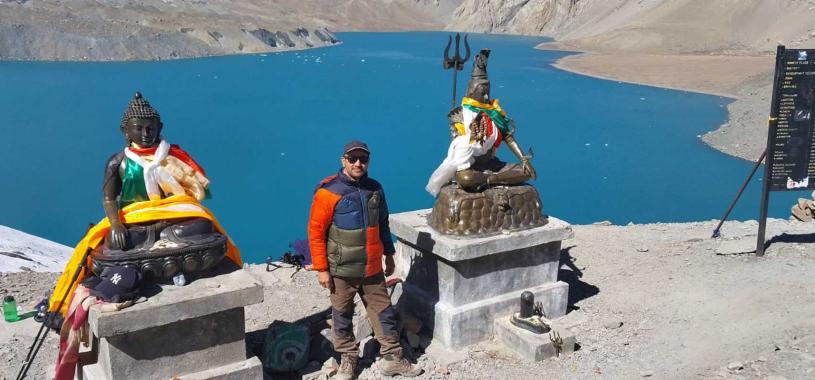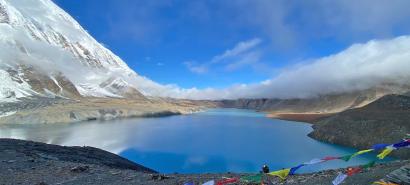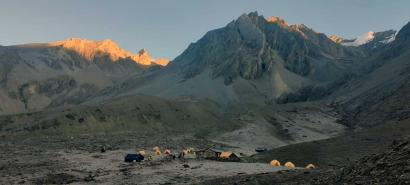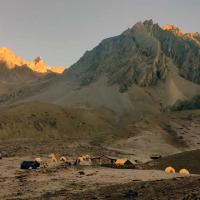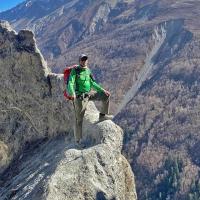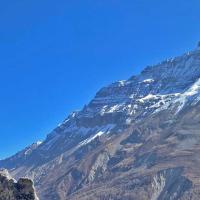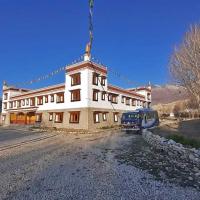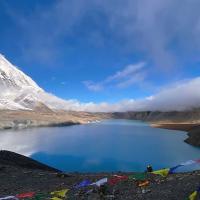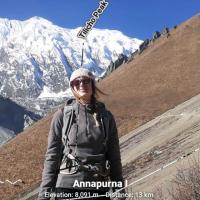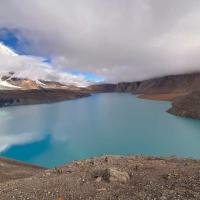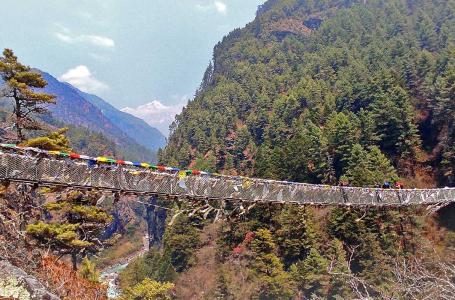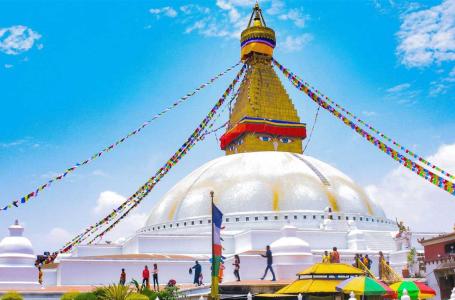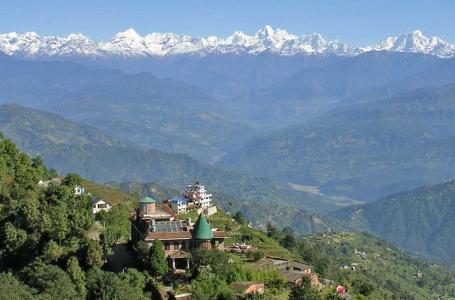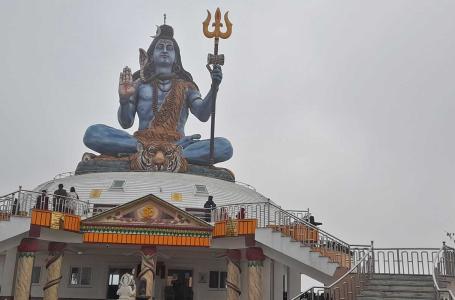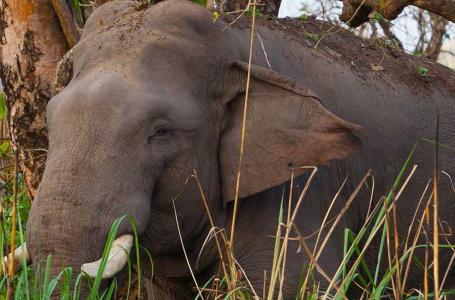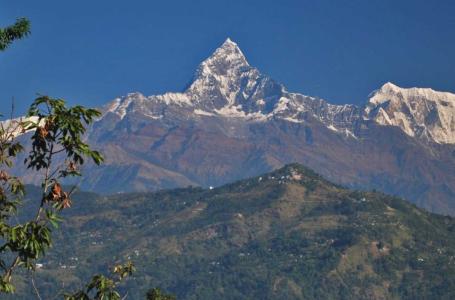- 01Pax USD 1100 pp
- 02 to 05 Pax USD 995 pp
- 06 to 10 Pax USD 880 pp
- 11 to 15Pax USD 760 pp
Overview
Tilicho Lake, situated amidst the towering peaks of the Annapurna region in Nepal, is a natural wonder that entices trekkers worldwide. Nestled at a breathtaking altitude of approximately 4,919 meters (16,138 feet) above sea level, it is one of the highest lakes globally, captivating adventurers with its pristine beauty and serene surroundings. The journey to Tilicho Lake often begins in Besi Sahar, a town that also marks the commencement of the renowned Annapurna Circuit Trek. Trekkers embark on a mesmerizing voyage through diverse landscapes, including lush forests, terraced fields, and charming villages like Chame and Manang. As you ascend higher into the Himalayas, the trail takes you through Khangsar and ultimately to the Tilicho Base Camp.
Trekking to Tilicho Lake is an extraordinary adventure in the heart of Nepal's Annapurna region. Starting from Besi Sahar or Syange, this remarkable journey spans approximately 10 to 14 days, offering trekkers a chance to explore diverse landscapes, from lush forests and terraced fields to high mountain deserts. The trail leads through charming villages like Chame and Manang, where you can immerse yourself in Tibetan-influenced culture, visit monasteries, and engage with the locals. The Tilicho Lake trek highlights include awe-inspiring views of the Annapurna and Dhaulagiri mountain ranges, with Tilicho Lake itself serving as the ultimate reward.
As one of the world's highest glacial lakes, it lies in a serene, high-altitude setting, surrounded by towering peaks. While the trek presents challenges due to significant altitude gain, careful acclimatization, physical preparedness, and adherence to safety precautions ensure a safe and memorable journey. Basic yet comfortable teahouses and lodges along the trail provide accommodation and nourishment, showcasing Nepali hospitality. Whether you opt for the classic Annapurna Circuit Trekking Route with a Tilicho Lake detour or a more direct path, this trek promises a harmonious blend of natural beauty, cultural discovery, and the exhilaration of high-altitude adventure in the captivating Himalayan landscape.
Planning the Tilicho Lake Trek:
Careful planning is essential for your Tilicho Lake Trekking in Nepal to ensure a safe and pleasurable journey. Begin by performing extensive study, obtaining the required permissions, and learning about the trek's itinerary and seasonal fluctuations. Create a well-planned schedule that includes acclimatization stops to properly combat altitude sickness. Evaluate your physical fitness and acquire the necessary clothes and equipment, such as hiking boots, warm clothing, rain gear, and so on.
Because solo travel is now prohibited, it is recommended that you travel with a companion or hire a guide and decide if you want to hire porters which will improve your experience and lighten your weight.
Always prioritize your safety and health by carrying a first-aid kit and purchasing travel insurance. Respect the local culture and ecology, and be prepared for unpredictable weather in the highlands. Finally, discuss your schedule and keep emergency contact information on hand to ensure you're well-prepared for the amazing Tilicho Lake Trek.
Best time to do Tilicho Lake Trek:
The best times to visit Tilicho Lake are During the Spring (March to May) and Autumn (September and November) seasons. Spring weather is often pleasant, with temperate temperatures and bright skies. The vivid flowers of rhododendron woods cover the route, providing a stunning and colorful background to your journey. This season also offers exceptional views of the adjacent Annapurna and Dhaulagiri mountain ranges, resulting in breathtaking vistas.
Autumn, on the other hand, is equally appealing to Tilicho Lake trekkers. The weather is still comfortable throughout the day and crisp and refreshing at night. The air is clean after the rainy season, allowing for unhindered, beautiful vistas of the gorgeous mountains. The paths are in good shape and typically dry, which adds to the whole trekking experience.
The Tilicho Lake Trek is not suggested from June to August owing to severe rainfall, poor visibility, landslides, and the abundance of leeches and insects, which can make the climb difficult and unpleasant. For a safer and more enjoyable experience, visit during the spring or fall seasons.
Food and Accommodations:
You can easily find Teahouses and hotels along the Tilicho Lake trek in Nepal which provides basic resources for nourishment and recuperation. These businesses provide a menu of traditional Nepalese food like dal bhat (rice and lentil soup) and momo (dumplings) to cosmopolitan delicacies. Breakfast menus usually include Western-style options including pancakes, omelets, and oatmeal. While the quality of the meals varies, they are freshly made and provide trekkers with substantial nutrition after a day of walking. Additionally, don't pass up the chance to sample local delicacies and sip hot beverages like tea and coffee, which are essential for staying warm and hydrated in the mountains.
Teahouses and lodges offer simple yet pleasant housing, with twin-sharing and dormitory-style rooms available. Bedding and blankets are usually given, however bringing a sleeping bag is recommended for extra warmth, especially during the winter months. Shared restrooms and hot showers are available, however, their quality and availability may vary. Keep extra cash on hand if credit card services are unavailable in distant places. Finally, teahouses and lodges provide crucial rest stops for trekkers, providing a chance to recharge among the breathtaking splendor of the Himalayan scenery.
It is always advisable to consult your guide for food recommendations for a more healthy and hygienic option.
Transportation:
The Tilicho Lake Trek often begins at Tirkhedhunga or Nayapul. If you want to fly to Pokhara, you can take a domestic airplane (30 minutes) or a tourist bus/private car to Pokhara (approximately 6-8 hours) and then go overland to Tirkhedhunga or Nayapul to begin your trek. We will either remain in a hotel in Pokhara for the night or begin our adventure if we arrive early. To go to Tirkhedhunga or Nayapul, we will hire a private car (shared jeep) or a local bus. The journey may take many hours, depending on road conditions and the starting place you select.
This trek will finally end once you reach Beni and from there, you can take a Local bus(or private vehicle) back to Pokhara.
Our trek to Khopra Ridge begins from there. The walking routes are well-marked, and you'll follow them through stunning scenery, villages, and woods until you reach the base camp.
Necessary Permits & TIMS for Tilicho Lake Trekking:
Trekking to Tilicho Lake involves obtaining various permits, including the Annapurna Conservation Area Permit (ACAP) and the Trekkers' Information Management System (TIMS) card. These licenses are necessary for controlling hiking activity and supporting conservation initiatives in the region and are obtained through licensed agencies only. No freelancer guide can provide you with these permits.
1. Annapurna Conservation Area Permit (ACAP):
To visit the Annapurna area you must get an Annapurna Conservation Area Permit (ACAP). This protected area, noted for its breathtaking natural beauty, varied landscapes, and rich cultural history, is one of the most well-liked hiking areas in the nation.
Cost: Nrs 3000 per person

2. Trekker's Information Management System(TIMS):
For hikers in Nepal, the TIMS (Trekker's Information Management System) card is a necessary piece of identification. It was put into place to improve trekkers' safety and security while also assisting authorities in keeping track of travelers in various hiking locations.
Cost: Nrs 3000 per person for non SAARC tourists and Nrs 1000 for SAARC trekers.
(All the necessary permits are included in this package)
Necessary documents for Permits:
- An original passport and current visa(valid for at least six months)
- One printed passport-sized photograph (required for an ACAP permit)
- Travel insurance papers (includes helicopter evacuation of up to 6000m)
Highlights
- Tilicho Lake, one of the world's highest glacial lakes, is the primary attraction.
- The trek offers diverse landscapes, from lush forests to alpine meadows.
- Explore traditional Nepali culture in villages like Chame, Manang, and Khangsar.
- Spectacular vistas of Annapurna and Dhaulagiri mountain ranges.
- A picturesque resting point before the final ascent to the lake.
Itinerary
Your adventure begins with a scenic drive from Kathmandu to Besisahar, covering a distance of 177 km. The journey offers breathtaking views of the Nepalese countryside, passing through lush valleys and picturesque villages. After reaching Besisahar, you'll switch to a sharing jeep for the onward journey to Dharapani. The road journey to Dharapani takes around 3 hours, covering a distance of 40 km. Dharapani is a charming village situated at an altitude of 1960m, offering a glimpse into the local culture and lifestyle of the Annapurna region.
Today, you embark on your trekking adventure, starting from Dharapani and heading towards Chame. The trail takes you through dense forests, suspension bridges, and quaint villages, offering panoramic views of snow-capped peaks. Chame, located at an altitude of 2710m, is the administrative headquarters of the Manang District. Here, you can explore the local market and enjoy the serene surroundings.
Continuing your trek, you'll make your way from Chame to Pisang. The trail gradually ascends, passing through lush forests and traditional Tibetan villages. Along the way, you'll be treated to stunning views of Annapurna II and Pisang Peak. Pisang is a picturesque village situated at an altitude of 3300m, offering mesmerizing views of the surrounding Himalayan landscape.
Today's trek takes you from Pisang to Manang, crossing the Marsyangdi River and ascending through rugged terrain. As you gain altitude, the landscape transforms into arid valleys and barren slopes. Manang, located at an altitude of 3510m, is a charming village nestled amidst towering peaks. Take some time to acclimatize to the altitude and explore the local monasteries and culture.
Spend a rest day in Manang to allow your body to acclimatize to the high altitude. You can take short hikes around the village, visit ancient monasteries, or simply relax and enjoy the stunning mountain views.
After a day of rest, resume your trek from Manang to Khangsar. The trail offers breathtaking views of Annapurna III and Gangapurna peaks as you ascend towards Khangsar. This remote village is situated at an altitude of 3756m, offering a peaceful retreat amidst the Himalayan wilderness.
Today's trek takes you from Khangsar to Tilicho Base Camp, situated at an altitude of 4160m. The trail gradually ascends through rocky terrain and alpine meadows, offering panoramic views of Tilicho Peak and the surrounding mountains. As you approach the base camp, you'll be awe-struck by the majestic beauty of the Tilicho Lake.
Embark on an unforgettable journey to explore Tilicho Lake, one of the highest lakes in the world situated at an altitude of 4919m. The trail offers stunning views of the surrounding peaks as you make your way to the pristine blue waters of Tilicho Lake. After spending some time soaking in the beauty of the lake, retrace your steps back to Khangsar.
Today, you'll trek from Khangsar to Yak Kharka, ascending through rocky terrain and alpine pastures. Yak Kharka, located at an altitude of 4040m, serves as a grazing pasture for yaks and other livestock. Enjoy the serene surroundings and prepare for the challenging trek ahead.
Continue your trek from Yak Kharka to Thorang La Phedi, situated at an altitude of 4600m. The trail gradually ascends, offering panoramic views of the surrounding peaks. Thorang La Phedi is a small settlement located at the base of Thorang La Pass, where you'll spend the night before crossing the pass.
Today marks the highlight of your trek as you cross Thorang La Pass, the highest point on the Annapurna Circuit at an altitude of 5416m. The ascent is challenging but rewarding, offering breathtaking views of the Annapurna and Dhaulagiri ranges. After crossing the pass, descend to the sacred Muktinath Temple, a revered pilgrimage site for both Hindus and Buddhists.
Conclude your trekking journey and embark on a scenic drive from Muktinath to Tatopani. The journey takes you through rugged terrain and picturesque villages, offering glimpses of traditional Nepalese life. Tatopani, renowned for its natural hot springs, provides the perfect opportunity to relax and rejuvenate after days of trekking.
Enjoy a leisurely drive from Tatopani to Beni and then proceed to Pokhara, where you can relax and unwind after your epic adventure. Pokhara, nestled amidst the Himalayas, offers stunning views of snow-capped peaks, serene lakes, and vibrant culture, making it the perfect place to conclude your Tilicho Lake Trek.
Cost Details
- Airport pickup and drop service.
- Hotel in Kathmandu Hotel Chhimeki 2nights.
- All food and accommodation during the trek.
- Transportation costs: Comfortable Drive from Hotel to trek start and ends.
- Experienced Government license holder English speaking trekking guide.
- Trekking permits: Annapurna conservation area fees & TIMS.
- First aid medical box.
- T-shirt, Duffel Bag and Trekking Map.
- Rescue Management Service.
- All Tax 13% VAT+10% Service charge).
- Farewell Dinner
- All kinds of Drinks.
- Visa fee to enter Nepal.
- International flight tickets and extra baggage charges.
- Extra night accommodation and meal costs in Kathmandu due to any change in the scheduled itinerary.
- Porter (1 porter for 2 trekkers with a max load of 17 to 20kg).
- Travel insurance/ Rescue operation costs.
- All personal expenses (laundry, electronic device. charging cost).
- All required trekking gear like sleeping bags and down jackets made available for rent.
- Tip for guide and porters.
- Hot and cold Shower.
Equipment List
- Lightweight and moisture-wicking trekking clothes, including long-sleeve shirts and trousers for sun protection.
- A warm and waterproof jacket or fleece for cooler evenings.
- A down or synthetic jacket for higher altitudes.
- A few pairs of moisture-wicking socks and underwear.
- A hat or cap for sun protection.
- A comfortable and sturdy backpack to carry your gear is essential.
- Necessary permits for the trek.
- Comfortable, broken-in trekking boots with good ankle support.
- Lightweight and breathable trekking socks.
- Headlamp or flashlight with extra batteries.
- Sunglasses with UV protection.
- Water purification tablets or a portable water filter.
- Refillable water bottle or hydration system.
- Snacks and energy bars for quick energy on the trail.
- Trekking map and a compass or GPS device.
- Personal first-aid kit with essential medications and supplies.
- Toilet paper and a small trowel for digging a cat hole.
- Hand sanitizer and wet wipes.
- Toothbrush and toothpaste.
- Soap and a small towel.


